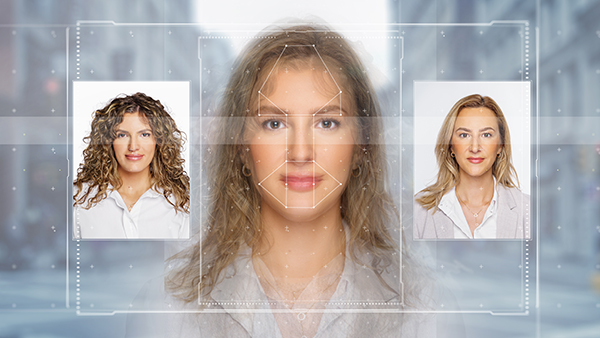- The TSA is rapidly deploying facial recognition technology at U.S. airports, aiming to improve efficiency and security. However, this expansion has sparked significant debate over privacy, transparency, and potential government overreach.
- Critics argue that the risks of biometric systems, particularly facial recognition, outweigh the benefits. Despite TSA assurances that photos are deleted after use, the scale of data collection raises fears of mass surveillance and erosion of individual privacy.
- While the TSA claims facial recognition is optional, reports indicate that opting out is often unclear or poorly enforced, leading to confusion and mistrust among travelers.
- Unlike systems like India’s Digi Yatra, which stores biometric data on users’ devices, the U.S. is moving toward centralized databases. Additionally, the TSA’s biometric technology has a three percent error rate, raising questions about its reliability and necessity.
- The bipartisan Traveler Privacy Protection Act of 2023 seeks to limit the TSA’s use of facial recognition and mandate data deletion, reflecting growing congressional concern over unchecked technological expansion and its implications for privacy.
The Transportation Security Administration (TSA) is rapidly rolling out biometric technology, including facial recognition, at airports across the United States. While the agency touts improved efficiency and enhanced security, the expansion has ignited a firestorm of debate over privacy, transparency, and the potential for government overreach. As biometric systems become more pervasive, Americans are left wondering: at what cost does convenience come?
Biometric technology, in simple terms, uses unique physical characteristics–like fingerprints, iris patterns or facial features – to verify identity. The TSA’s latest push involves facial recognition scanners, which capture an image of a traveler’s face and compare it to a photo on their ID or passport. The agency claims this process speeds up security checks and reduces human error. But critics argue that the risks far outweigh the benefits, particularly when it comes to safeguarding personal freedoms.
Currently, the TSA has deployed its next-generation Credential Authentication Technology (CAT-2) scanners, equipped with facial recognition, at nearly 84 airports. Plans are underway to expand this system to over 400 airports nationwide. Meanwhile, Customs and Border Protection (CBP) has already implemented its Biometric Facial Comparison system at 238 airports, including international hubs. CBP reports positive feedback from passengers, but privacy advocates remain unconvinced.
The central concern is privacy. While the TSA insists that facial recognition photos are deleted shortly after use, the sheer scale of data collection raises red flags. A bipartisan group of 12 senators recently called for an investigation into the TSA’s biometric data practices, warning that the agency could amass one of the largest federal surveillance databases without congressional approval. This, they argue, sets a dangerous precedent for government surveillance and erodes individual privacy.
Adding to the unease is the TSA’s inconsistent messaging. While the agency claims facial recognition is optional, reports suggest that opting out is neither straightforward nor consistently enforced. Travelers have recounted instances where Transportation Security Officers (TSOs) were unaware of opt-out rights or even became confrontational when passengers requested to bypass the facial scan. This lack of clarity undermines trust and raises questions about the TSA’s commitment to transparency.
The debate also intersects with the federal REAL ID Act, which aims to standardize identification requirements for air travel. Despite being introduced two decades ago, many states have yet to fully implement REAL ID standards. As of now, only a fraction of Americans hold compliant IDs, with some states reporting compliance rates as low as 32 percent. This raises the question: if the government struggles to enforce existing ID standards, how can it responsibly manage a nationwide biometric system?
Biometric technology gaining traction globally
Globally, biometric technology is gaining traction. India’s Digi Yatra program, for example, boasts nine million active users and processes millions of flights annually. Unlike the U.S. system, Digi Yatra stores biometric data on users’ mobile devices rather than centralized databases, offering a potential model for balancing convenience and privacy. However, the U.S. appears to be heading in a different direction, with plans to expand biometric systems beyond security checkpoints and potentially make them mandatory in the future.
Proponents argue that biometrics enhance security by catching fraudulent documents and reducing wait times. Yet, critics point to a glaring flaw: the technology’s error rate. A TSA spokesperson admitted to a three percent false negative rate, which could result in discrepancies for approximately 68,000 travelers. Moreover, facial recognition fails to address the hundreds of individuals who reportedly bypass security checkpoints each year. These shortcomings call into question the necessity of such an invasive system.
The bipartisan Traveler Privacy Protection Act of 2023 seeks to rein in the TSA’s biometric ambitions by stripping the agency of its authority to use facial recognition for passenger screening and requiring the deletion of collected data. While the bill has yet to pass, it reflects growing congressional unease over unchecked technological expansion.
As the TSA forges ahead with its biometric agenda, Americans must weigh the trade-offs. Is the promise of faster boarding and enhanced security worth the erosion of privacy and the normalization of surveillance? The answer lies in striking a delicate balance – one that prioritizes both safety and individual freedoms. Until then, the expansion of biometric technology in airports remains a contentious issue, with far-reaching implications for the future of privacy in America.
Visit Surveillance.news for more stories like this.
Facial recognition is creepy. Watch this video.
This video is from the Marjory Wildcraft channel on Brighteon.com.
More related stories:
Britain’s new Online Safety Act is forcing small websites to shut down.
The Deep State’s triumph: 2024 and the erosion of liberty.
U.S. officials warned to switch to encrypted communications amid cyber espionage threats.
The surveillance state’s assault on privacy: A dangerous precedent.
U.S. officials warned to switch to encrypted communications amid cyber espionage threats.
Sources include:
